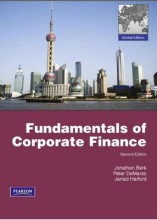Summary: Lecture Slides
- This + 400k other summaries
- A unique study and practice tool
- Never study anything twice again
- Get the grades you hope for
- 100% sure, 100% understanding
Read the summary and the most important questions on Lecture Slides
-
1 Lecture 1
This is a preview. There are 3 more flashcards available for chapter 1
Show more cards here -
What are the five phases of an OR study?
- Definition of the problem
- Construction of the model
- Solution to the model
- Validation of the solution
- Implementation of the model
-
What is a Heuristic?
A Heuristic is a method to find good, feasible solutions fast. -
What do we know about the solutions of Heuristics? (2p)
- It is fast
- The relative quality compared to the optimal solution is unkown
-
A linear program contains two components, which components?
- An objective function to minimize/maximize.
- (in)Equality constraints
-
The dimention of the problem is determined by what?
The count of the decision variables. -
In what five steps do you formulate a linear program?
- Organize data
- State objective in words
- Define decision variables
- Write the objective function
- Write constraints
-
What are Right Hand Sides (RHS)?
The limits on the Resources -
What are the parameters of a linear program?
The actual values of the RHS.
(in x1 <= 5, 5 is the parameter) -
2 Lecture 2
-
What are the four steps of solving an linear program the graphical method?
- Graph all constrains
- Find the slope of the objective function by drawing an example line.
- Determine the direction of optimization by drawing another line.
- Find the feasible corner point by moving the objective line to the boundary of the feasible region.
-
What are Pure, Mixed and Binary Integer programs?
Linear Integer Programs where- All variables are integers
- Some variables are integers, some are continuous (MIP)
- All variables are binary (BIP)
- Higher grades + faster learning
- Never study anything twice
- 100% sure, 100% understanding































